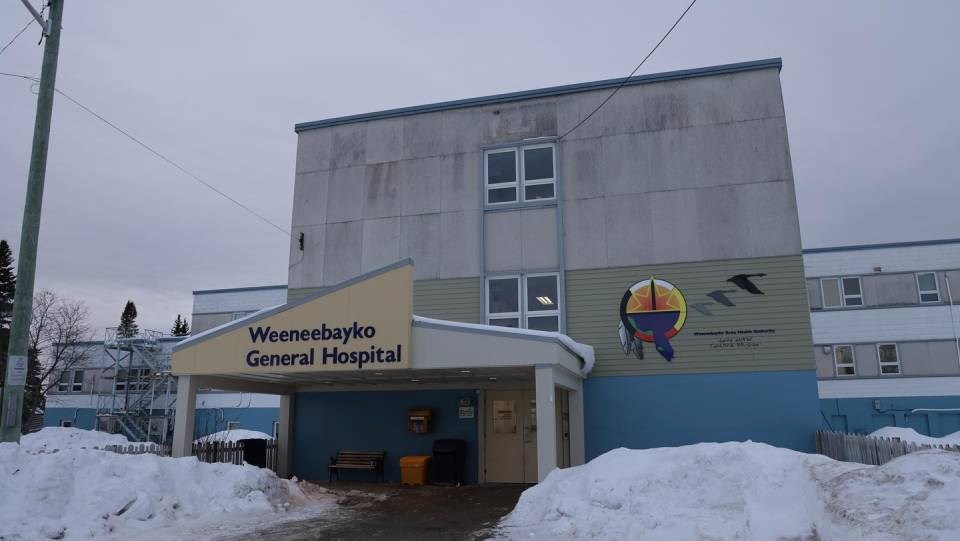A new, $31-million education program is being established in Moosonee to train Indigenous doctors, nurses, and other health-care professionals to provide culturally appropriate care and close the gap in health-care services in Far North communities.
Weeneebayko Area Health Authority (WAHA) and Queen’s University announced on Feb. 28 they’re partnering to develop the program, which is being funded by The Mastercard Foundation, a global organization focused on increasing access to education and skills training.
“Together, we have a vision to educate Indigenous nurses, physicians, physiotherapists, occupational therapists, midwives, and paramedics here in the community,” said Jane Philpott, dean of Queen’s Health Sciences, during a virtual announcement streamed live from Moosonee.
“When students graduate from these health sciences programs, they will be ready to serve their communities and provide much needed access to health care.”
Calling the program an “unprecedented” approach to health sciences education, Philpott said the programming would be culturally informed, decolonized and interdisciplinary.
“It will transform the way that health care is delivered to Indigenous peoples in the Weeneebayko area, along the western coast of James Bay, and well beyond that,” she said.
Lynne Innes, the health authority’s president and CEO, said major goals of the initiative are to build sustainable, community-centred health care, while improving patient outcomes and addressing gaps in delivery.
First Nations ways of knowledge will be integrated into the programming so that students will graduate being able to provide culturally appropriate care.
A mentorship program will also be available to encourage health-care professionals to stay and practise locally after graduation.
“In our region, we all know the health-care challenges facing remote First Nations communities, including low accessibility to providers and facilities, a lack of cultural competence in care, health outcome gaps, and building Indigenous representation,” Innes said.
“Our goal is to drive health transformation by improving regional health outcomes, addressing delivery gaps, and building Indigenous representation.”
In 2020, the health authority announced the redevelopment of its health-care facility, which Infrastructure Ontario estimates will cost between $220 million and $499 million.
It includes a new, 36-bed hospital with a larger, 24-hour emergency department, modern surgical suites, a dialysis centre, expanded mental health and additions programming, improved primary health care services, a lab, pharmacy and diagnostic imaging services, and traditional healing services.
Additionally, the project will include an Elder care lodge, a visitor hostel and staff accommodations, along with a new ambulatory care centre on Moose Factory Island.
Innes said the new partnership with Queen’s will go a long way in training the staff required to run these new facilities.
“This is going to play a huge role in building capacity and sustainability for our redevelopment projects,” Innes said.
“I know that it’s not going to be ready for a few years yet, but we are struggling with a health human resource issue currently, so we’re looking at innovative ways to be able to bring education to the region, to be able to grow our own people, to be able to sustain our health-care system for future generations.”
Reeta Roy, president and CEO of The Mastercard Foundation, noted that, while most of the organization’s work takes place on the continent of Africa, in Canada, it focuses on partnerships with Indigenous communities.
Being involved in this initiative is an honour, she said.
“For us, this work centres around the lives and the futures of young people, that they are able to pursue their own aspirations and make of their lives, lives of service and service to their communities,” Roy said.
The Weeneebayko-Queen’s partnership is “especially meaningful because it speaks to change and dramatic transformation, not just in terms of the lives of people, but also in how health professionals are prepared for careers, which really look at patients and look at lives of individuals holistically.”
Philpott acknowledged that there is much work to be done before the program is operational.
Efforts are already underway at local high schools to get youth interested in pursuing careers in the health sciences and create pathways for them to continue into postsecondary education.
The partners are aiming for the first cohort of the program to get underway in 2025.




